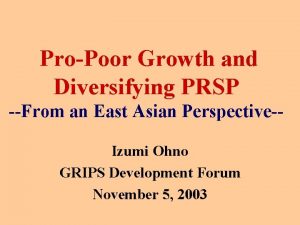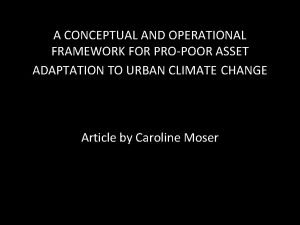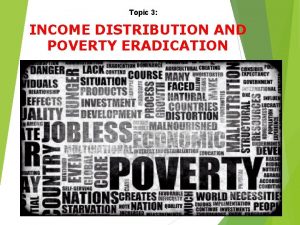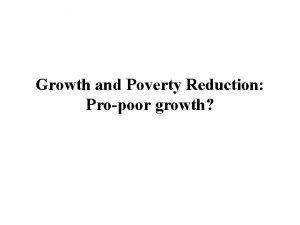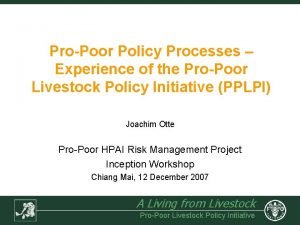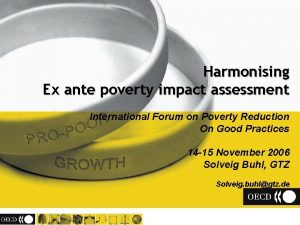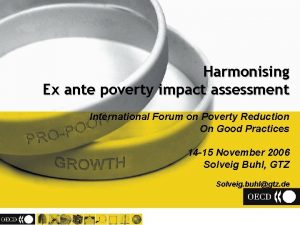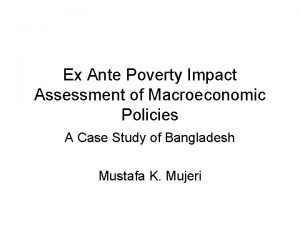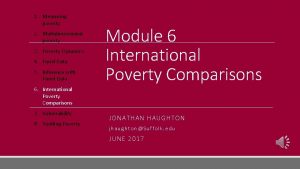PROMOTING PROPOOR GROWTH Ex ante poverty impact assessment









- Slides: 9

PROMOTING PRO-POOR GROWTH: Ex ante poverty impact assessment Presentation at DAC Evaluation Network 17 November 2006 POVNET Ex Ante PIA Team, Wolf M. Dio

The Task Team within DAC POVNET • Mandate of the team: to develop a simple, harmonized approach for ex ante poverty impact assessment of joint interventions • Participants: DAC/OECD, France, Germany, Japan, Netherlands, UK, Sweden, Switzerland, USA, Ireland, Finland

The Process • Group founded in June 2005 • Summary Report “Harmonizing ex ante Poverty Impact Assessment” approved by DAC in March 2006 http: //www. oecd. org/dataoecd/32/44/36573576. pdf • Pilots by several donors in 2006 • “Practical Guide to Ex Ante Poverty Impact Assessment” has been submitted to POVNET in November 2006 and will soon be published

Basic principles • Relatively simple, flexible approach • Based on existing approaches • Can cover most interventions (policy, programmes, projects, NOT budget support) • Based on basic principles, such as – better to be roughly right than precisely wrong – use and assess existing data and analysis (with the option to collect additional data) – process as important as final output • Provides 5 modules with matrices

PIA Framework and modules PIA Modules 5 Assess Improvements to MDGs plus 2 Analyse Institutions & Stakeholders Risks 1 National Strategies / Plans Country Assistance Strategies gaps Determine & Design Interventions y and Determine transmission channels qualit 3 ation Assess Enhancement to capabilities Inform 4 R E S U L T S C H A I N

PIA is a flexible approach • PIA should be embedded in ongoing planning and appraisal process: can be part of comprehensive planning document or constitute separate report • PIA can be carried out by interdisciplinary team or as a desk study – should never degenerate into a mere box ticking exercise • Time needed varies between 2 days and 2 -3 weeks

The improved understanding of the planned interventions serves several purposes PIA allows to • identify interventions with high poverty reduction impacts • improve design of proposed intervention • identify existing information and information gaps • identify monitoring needs • Increased results orientation, transparency and accountability • Reduces burden on partner countries • Promotes implementation of Paris Declaration

What needs to be done? - Our Proposed Work Programme 2007 Scaling up experiences through… • Accompanying and analysis of PIA applications and dissemination of experiences, regarding institutional and methodological aspects such as – optimal suitability for different modes of delivery – standardized versus flexible application – application of PIA by partner countries – integration of PIA into institutional assessment and evaluation procedures – linking ex ante PIA approach to monitoring and evaluation

THANK YOU! For further information Promoting Pro-Poor Growth: Harmonising Ex Ante Poverty Impact Assessment http: //www. oecd. org/dataoecd/32/44/36573576. pdf The Practical Guide to Ex Ante Poverty Impact Assessment will be published soon!
